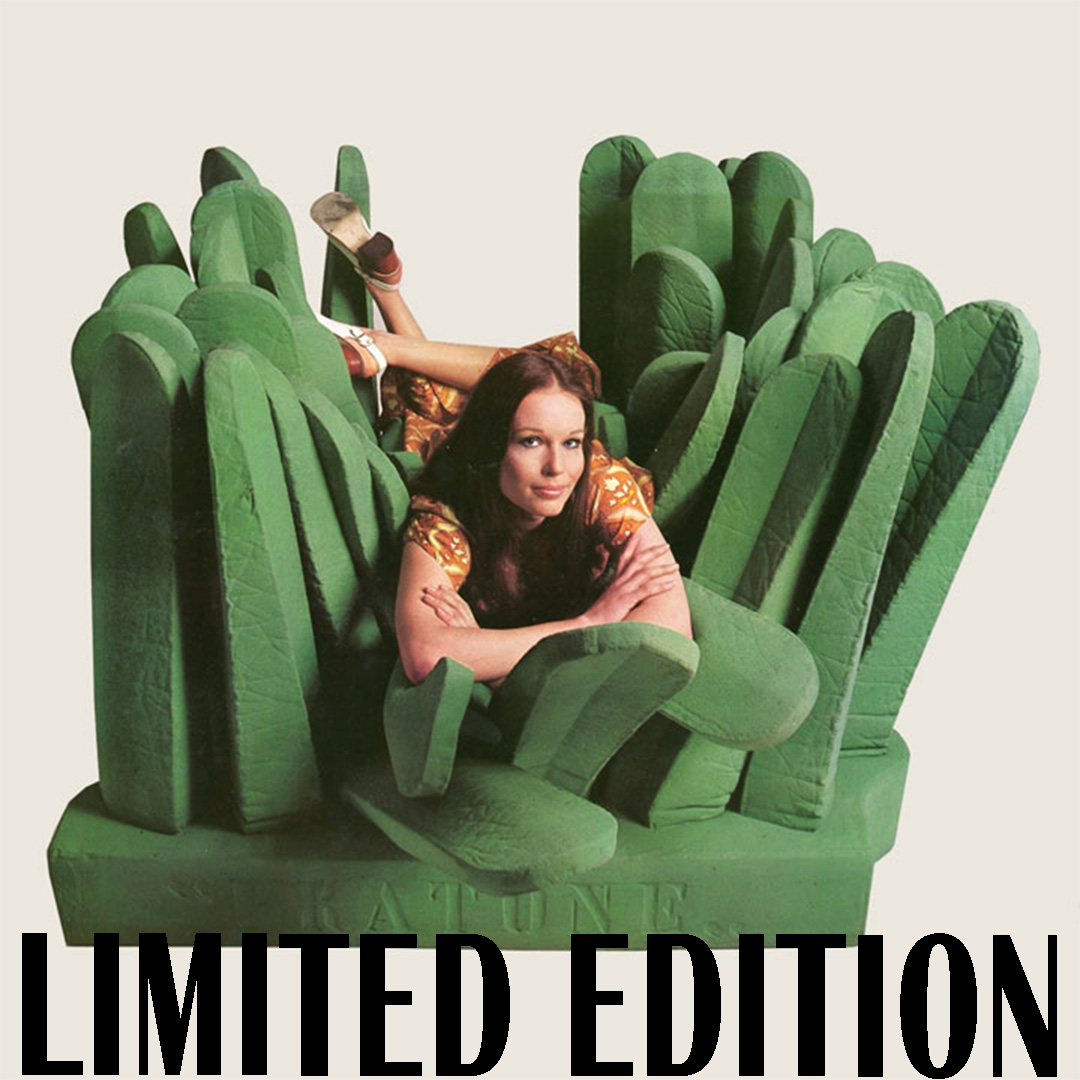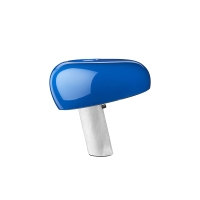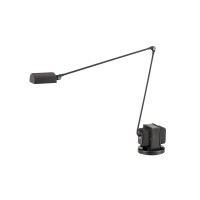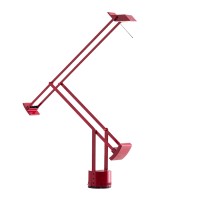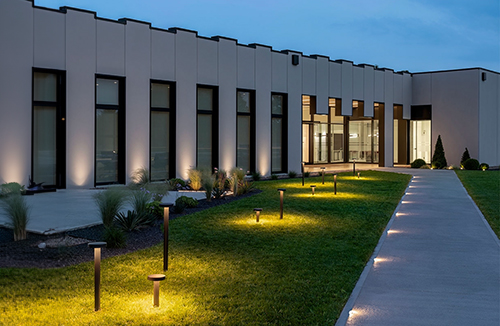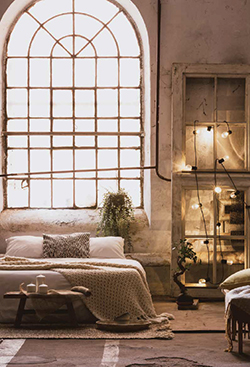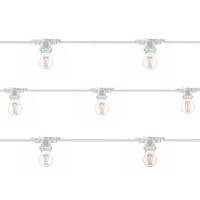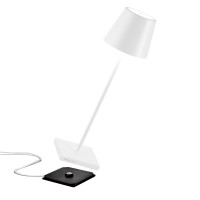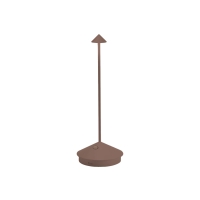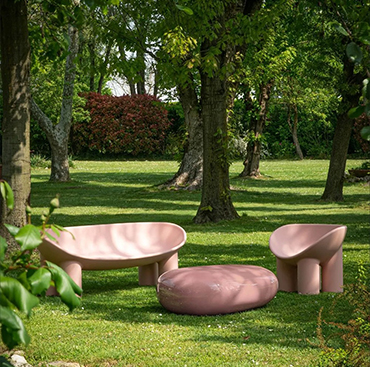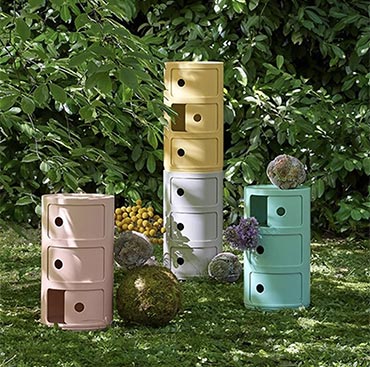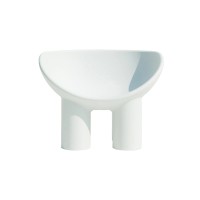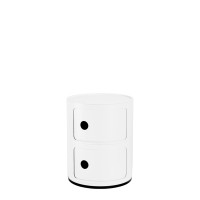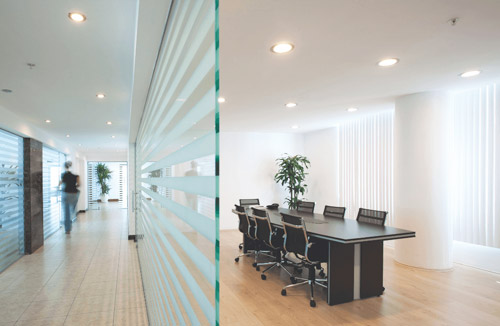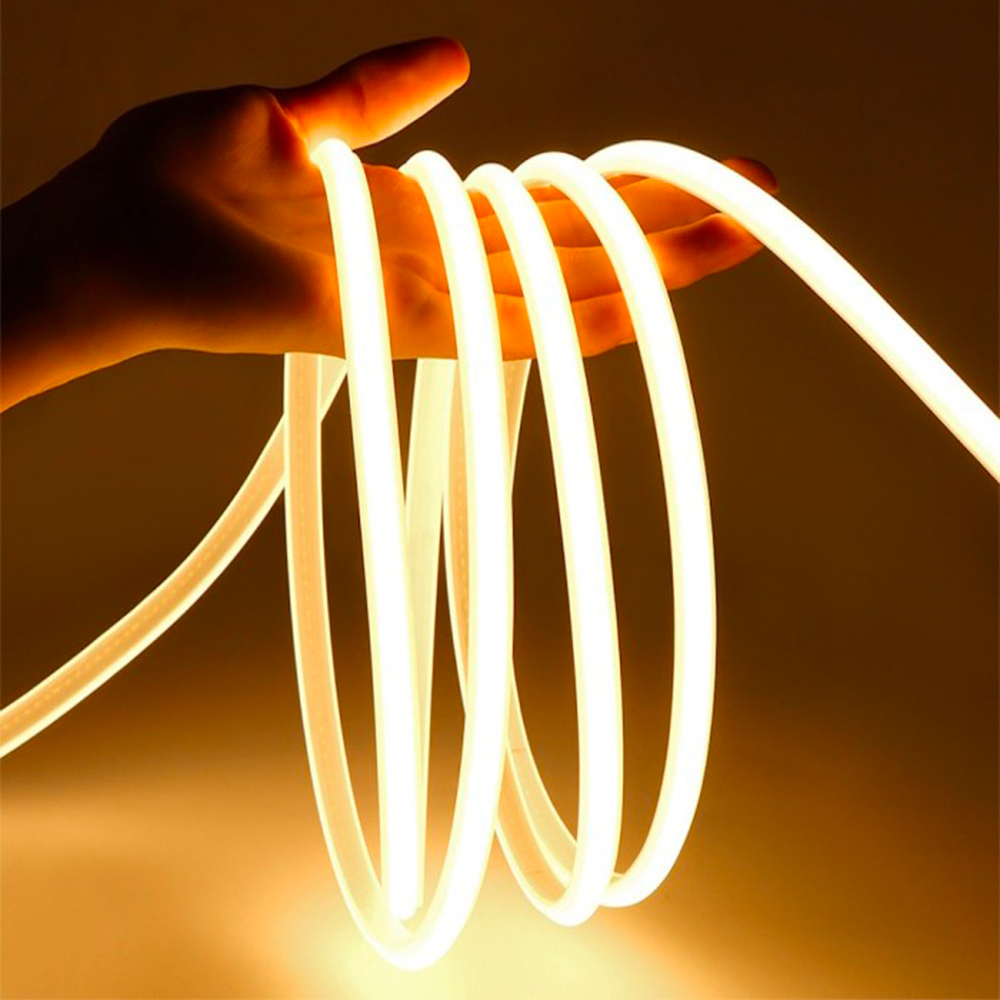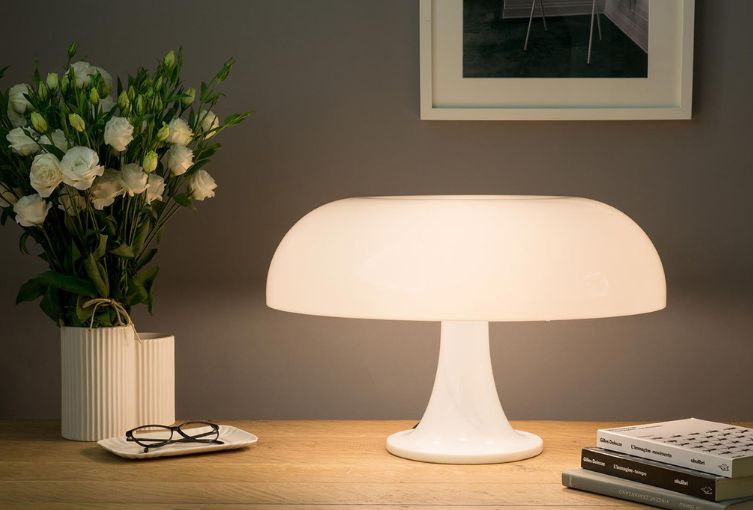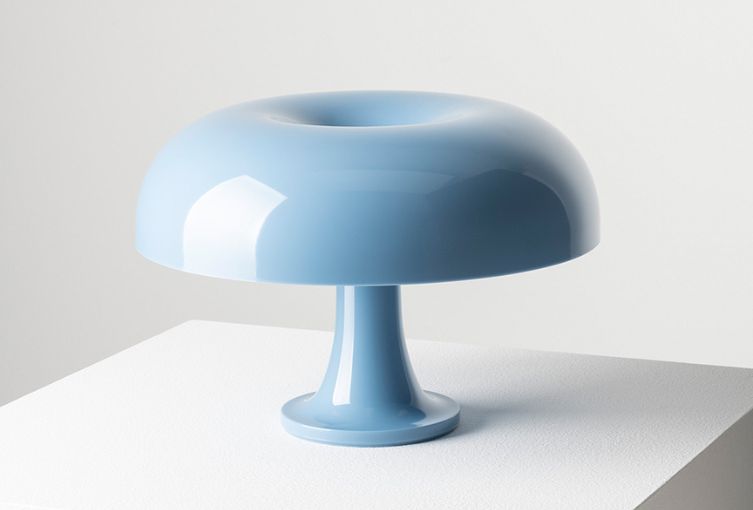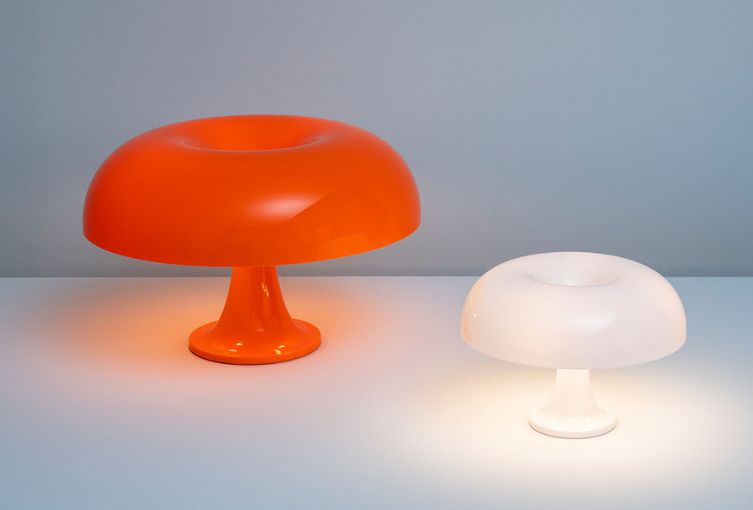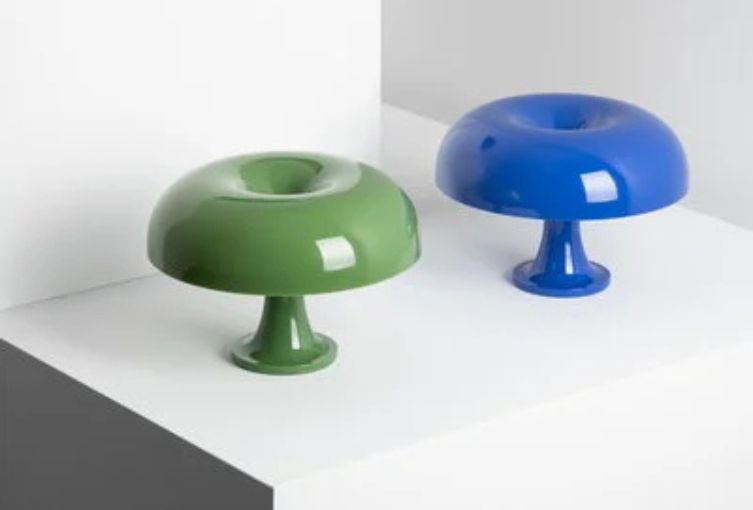The Nesso and Nessino table lamps, designed in the 1960s, embody the essence of Italian design of that decade, an era of fervent modernization in which the domestic landscape was redesigned thanks to the introduction of plastic materials.
Born from the creativity and innovation of the Artemide brand, these two models combine expressive form and functionality, becoming emblems of a new way of interpreting space and light. Nesso and Nessino therefore not only challenge production technology, but they do so through a bold and fluid structure that draws inspiration from the curves of nature, thus creating true works of art.
Exhibited in prestigious museums such as the Metropolitan Museum of Art and the Museum of Modern Art, they are now more than ever timeless symbols, appreciated by collectors and design lovers.
Let's discover Nesso and Nessino in detail!
Distinctive characteristics of Nesso and Nessino
Nesso, the larger of the two, comes with a base and a diffuser entirely made of ABS resin, an innovative plastic material for the time, which allows you to create a shape without edges and with soft lines. Its sinuous curves are reminiscent of those of a mushroom, a shape inspired by the natural world that exudes a sense of harmony and lightness. The lamp is available in orange and white, two shades that reflect the energy and vitality of the 60s, with white underlining the essential side and minimalist character of the lamp, while orange gives a note of warmth and dynamism.
Nessino, the most compact version, takes up the design of Nesso but in a smaller size, designed for smaller spaces. Available in the classic colors red, white and orange, Nessino has also seen the creation of a Special Edition in shades such as light blue, Klein blue, yellow, black and green. This color range therefore offers solutions that adapt perfectly to different atmospheres and preferences, maintaining the integrity of the iconic and sculptural structure that makes it immediately recognisable.
Where to place Nesso and Nessino
Thanks to their compact structure and the variety of colors available, Nesso and Nessino can be placed in different rooms of the house or office, creating sophisticated and surprising atmospheres. Here are some ideas for best positioning these lamps:
* Living room: Placing Nesso or Nessino on a coffee table or shelf allows you to create an original focal point. Orange or red add a vibrant color note, perfect for neutral or minimalist environments, where the lamp can stand out in all its beauty.
* Bedroom: used as a bedside light, Nessino, with its soft and enveloping light, is ideal for creating a relaxing and welcoming atmosphere. Colors such as white or Klein blue are particularly suitable for a relaxing environment, while light blue or yellow can bring a touch of cheerfulness and freshness.
* Study or office: Nesso and Nessino are also perfect for professional environments. A color like black or green in the Nessino version adds a touch of seriousness and modernity to a study or office, while still maintaining a note of personality.
* Hotel entrance or lobby: in a passageway space, these lamps can serve as a welcoming hallmark, especially in orange or yellow, warm colors that exude positive energy and welcome guests with a soft, inviting light.
Why choose Nesso and Nessino
Nesso and Nessino are more than simple lamps: they are manifestos of an era and a modern vision of design. Their plastic structure represents the democratization of design, making an object of extraordinary quality and beauty accessible, and marks an epochal transition towards an industrial production capable of blending aesthetics and practicality.
The choice of intense colors and the iconic shape of the lamps convey an expressive force that, even today, attracts the eyes and enriches any space. Opting for one of these lamps means bringing a piece of Italian design history into your home, a style capable of giving character and uniqueness to any environment, from modern to more classic contexts, thanks to their versatility.
The quality and care in the production process, combined with the visual impact, ultimately makes Nesso and Nessino perfect if you are looking not only for a source of light, but also for a real art object.
Choice of Nesso and Nessino colours
The vast choice of colors available for Nesso and Nessino allows you to play with shades that emphasize different aspects of their aesthetics. Here are some indications for choosing the perfect color based on the occasion and the style of the environment:
* Orange and red: ideal for dynamic and lively environments, these colors are perfect for a living room or a room where you receive guests, as they bring warmth and movement.
* White: it is the most neutral and versatile choice, suitable for any environment and style. White is perfect for those who prefer a minimalist and refined look, which leaves room for the shape of the lamp itself to be the protagonist.
* Klein blue and light blue: elegant and intense colors, perfect for a study or bedroom where you want to create a serene and inspired environment. Klein blue, in particular, adds a touch of depth and modernity.
* Yellow and green: perfect for young and creative environments, these colors are ideal for a space such as an art studio or a corner dedicated to relaxation and reading.
* Black: represents a bold and sophisticated choice, particularly suitable for a work environment or for those who prefer a touch of timeless modernity.
Nesso and Nessino: 2 timeless icons of Italian design
Nesso and Nessino are not just lamps, but objects that carry with them the symbol of the plastic revolution of the 1960s, an era that radically changed the approach to industrial design. With their nature-inspired shape, eye-catching colors and incredible versatility, these lamps continue to be appreciated and admired around the world.
Choosing Nesso or Nessino means making an investment in beauty, history and personality, enriching your environment with a touch of authenticity and timeless Italian style.
Discover Nesso and Nessino on our Diffusione Luce website!
Written by Alice Pruccoli


